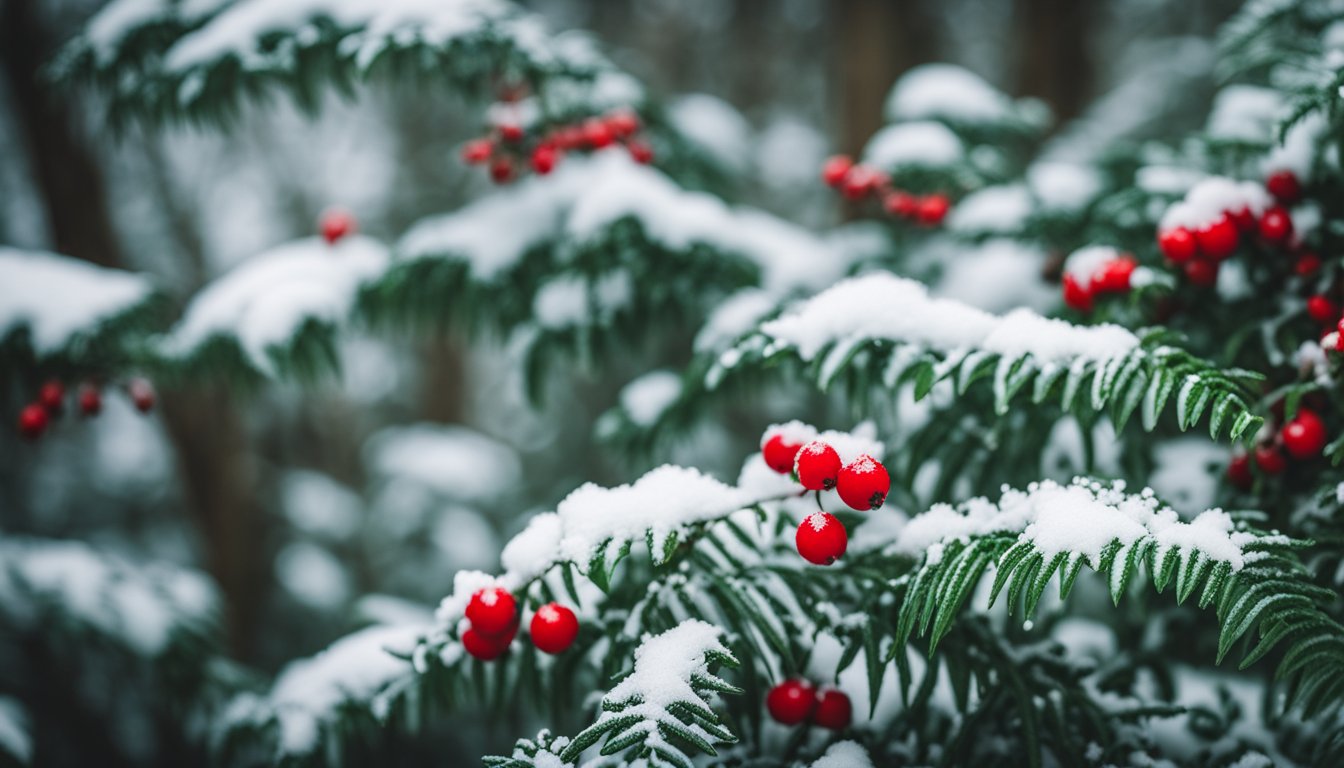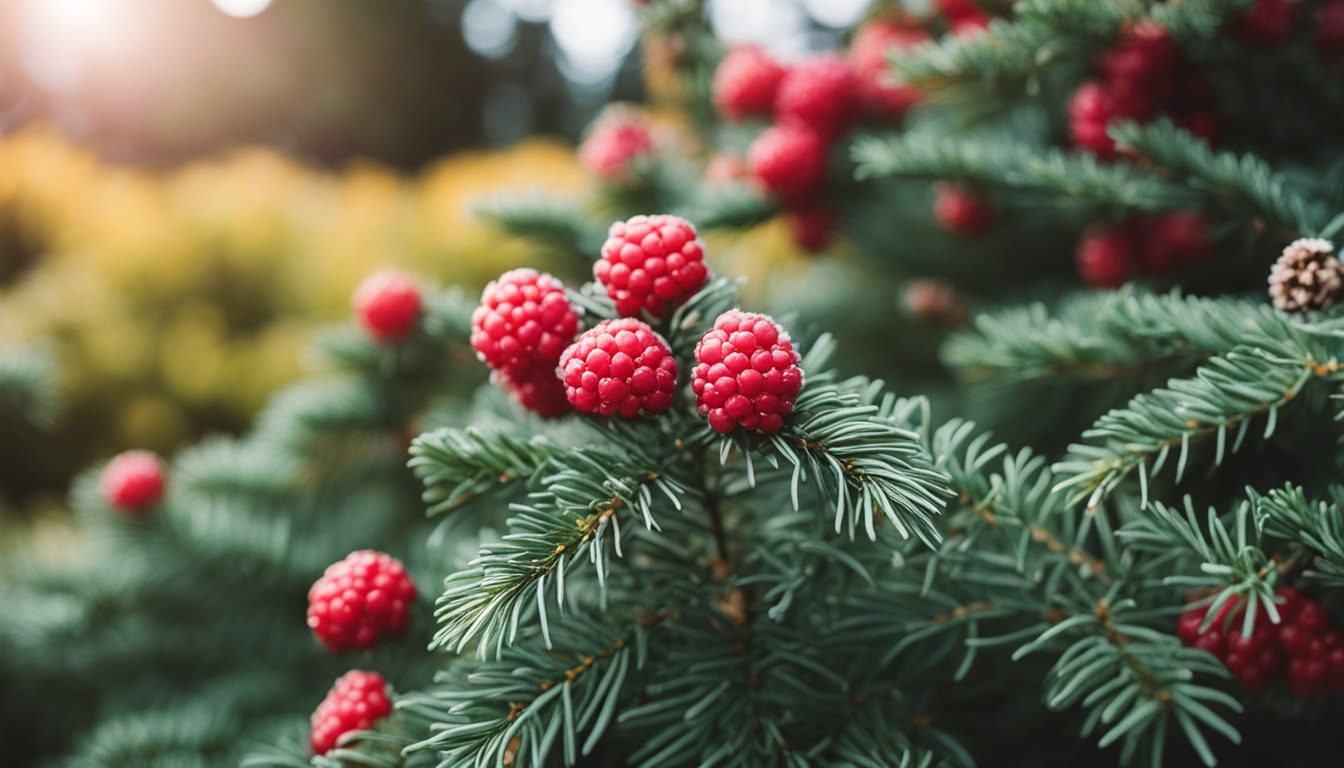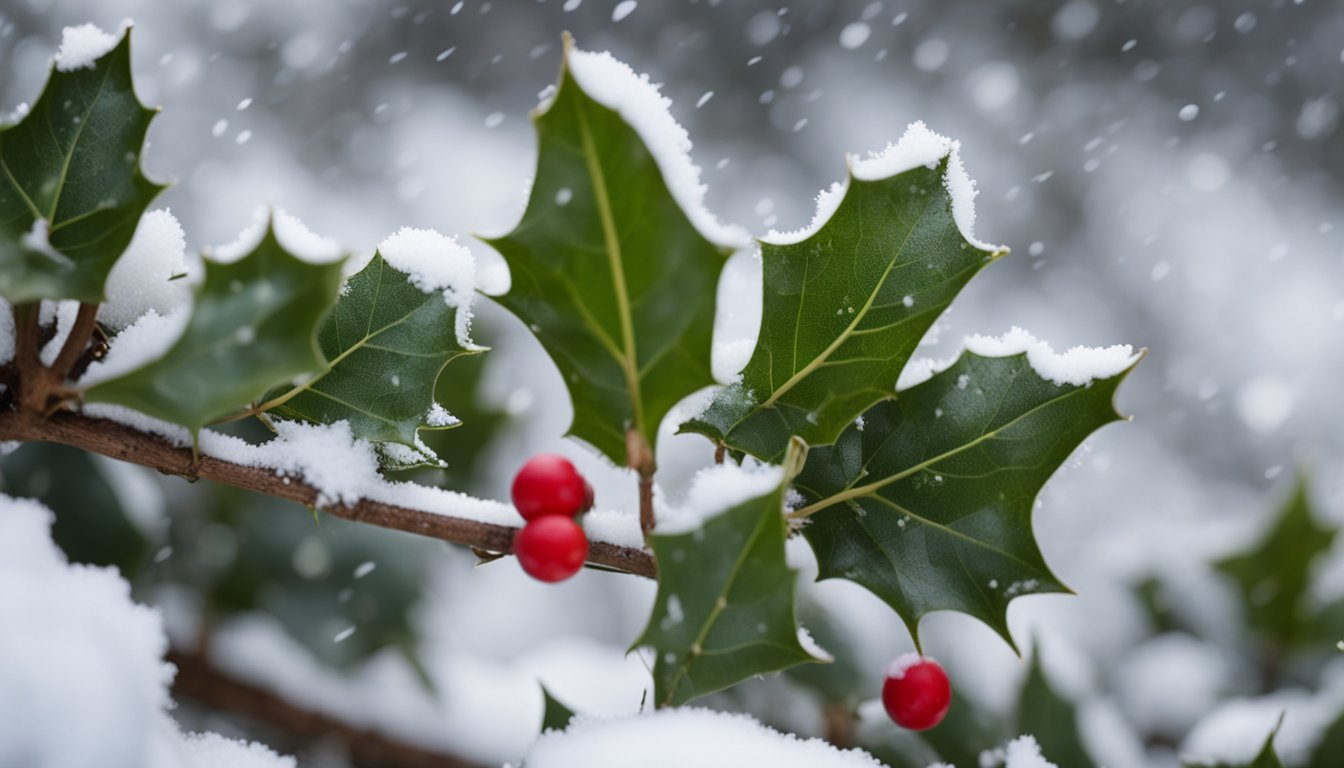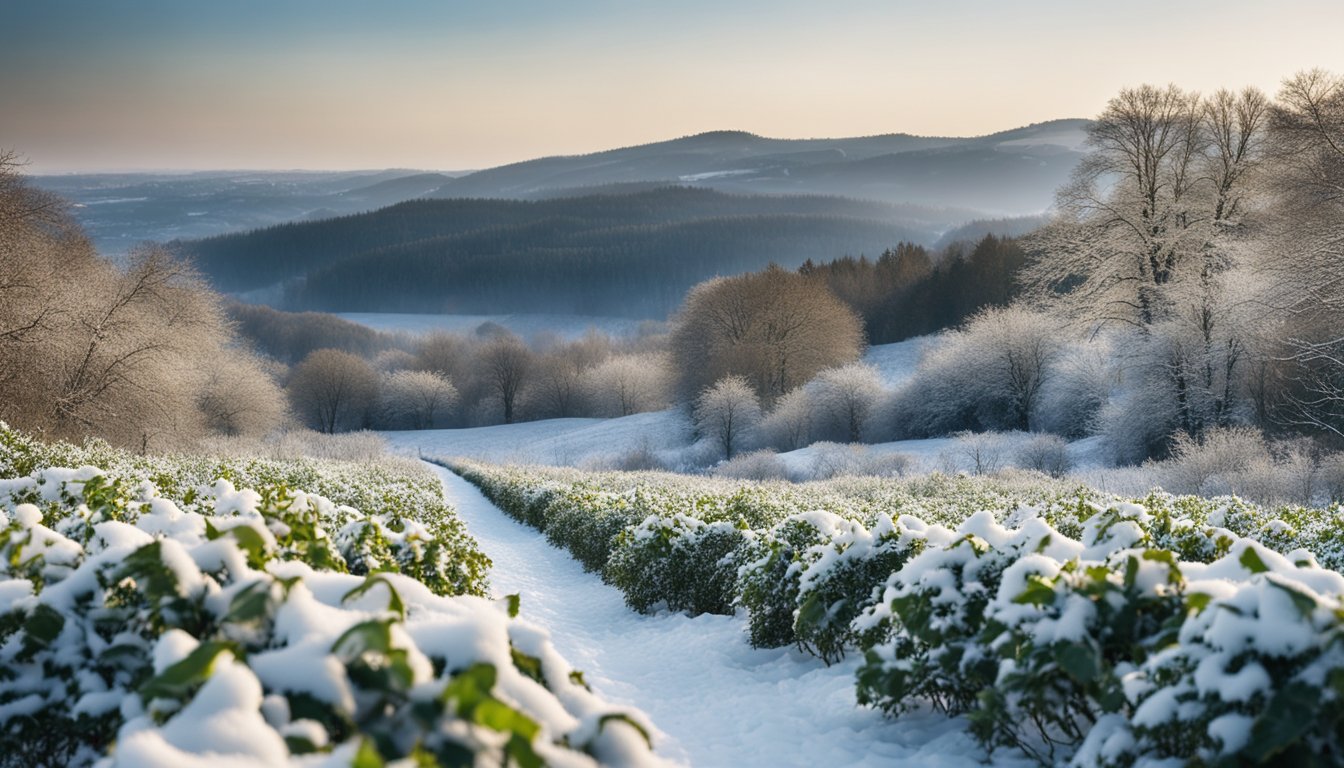Late updated: 20 Aug 2024 08:08
Written by: Emily Thornton
Native UK Plants For Winter Interest: Enhance Your Garden's Cold-Weather Appeal
When the cold months roll around, the gardening world might appear to go dormant, but there's a variety of native UK plants that ensure your garden remains vibrant and visually engaging through the winter. From shrubs bedecked with berries to evergreens that offer texture and colour amid the frost, these native species promise to transform your winter landscape. Among the top picks, the Green Hawthorn stands out with its striking red berries that persist throughout the season, providing both beauty and sustenance for wildlife.

Additionally, the Witch Hazel, particularly the 'Jelena' variety, brings a splash of blazing orange to the garden. Its frost-resistant flowers add warmth and interest when most plants lie dormant. These resilient plants, combined with thoughtful gardening practices, can make your winter garden as captivating as any other season.
Finally, incorporating evergreens like the Holm Oak or the distinctive Inkberry Holly can also provide structure and enduring colour. With a strategic approach, you can ensure your winter garden brims with life and interest, making it a delight for not just you but also for the visiting wildlife.
Key Takeaways
- Selecting native plants like Green Hawthorn ensures winter interest.
- Plants such as Witch Hazel add vibrant colours to a winter garden.
- Evergreens provide structure and sustained visual appeal.
Selecting Plants for Winter Visual Appeal

Choosing the right native plants for winter interest can transform your garden into a captivating winter wonderland. Focusing on trees and shrubs with striking features, as well as charming winter-flowering plants, ensures year-round visual appeal.
Noteworthy Trees and Shrubs
We should consider trees and shrubs that boast vibrant berries, unique bark, or eye-catching stem colours. Dogwood (Cornus sanguinea) is a prime example, known for its red stems that stand out against the winter landscape.
Green hawthorn offers structure with its dense canopy and vibrant red berries, attracting birds and enhancing garden diversity. For those wanting fragrant options, witch hazel is unbeatable, with its twisted branches and yellow blossoms that emit a sweet scent.
We also recommend viburnum, as its snowball-like clusters of red berries and dark green foliage add layers of interest. It’s essential to choose varieties that thrive in your garden's sun exposure and soil conditions, whether full sun or partial shade. Well-drained soil is crucial for most trees and shrubs.
Charming Winter-Flowering Plants
Incorporating winter-flowering plants heightens the seasonal appeal. Wintersweet (Chimonanthus praecox) is a standout, producing delicate, sweet-scented flowers on bare branches. It performs best in full sun and well-drained soils.
Daphne is another excellent choice, offering clusters of pink, fragrant flowers that attract pollinators. Position daphne in partial shade to guard it from winter frost.
For lower ground cover, consider heathers and snowdrops. Both are resilient and provide bursts of colour and interest. Christmas rose (Helleborus niger) with its white blooms and winter aconite (Eranthis hyemalis) adding a dash of yellow, both flourish in shaded areas.
Another versatile plant is mahonia, boasting spiky leaves, bright yellow flowers, and blue berries, providing a feast for the eyes. These selections ensure your garden remains lively and inviting throughout winter.
Gardening Practices for Winter Success

When preparing your garden for the winter months, it's vital to focus on proper cultivation and maintenance practices, as well as providing support for local wildlife. These practices ensure that your garden remains vibrant and beneficial to the ecosystem even during the colder season.
Cultivation and Maintenance Tips
Ensuring your garden thrives during winter starts with selecting plants that are well-suited to the season. Evergreens and conifers are excellent choices for providing structure and greenery. Native species, such as sarcococca confusa, add both winter colour and fragrance.
Soil preparation is essential. We should aim for fertile, humus-rich soil that retains moisture but ensures good drainage. Adding mulch can help maintain soil temperature and reduce the growth of weeds.
Pruning is another key task. Trim dead or damaged branches to promote healthy growth and manage plant shape. For plants that flower in winter, such as the Chimonanthus praecox, a light prune can enhance blooming.
Regularly check for pests and diseases, as plants can be vulnerable during the colder months. Use organic remedies to tackle any issues, keeping in mind that some insects are beneficial.
Supporting Local Wildlife
Winter gardens can play a crucial role in supporting our native wildlife. Planting berries and fruits like holly and crabapple provides food for birds during scarce months. Hedges can offer shelter and nesting places.
We should include plants that produce nectar and pollen, such as winter jasmine and heather, to support bees and other pollinating insects. These plants are lifelines for early-waking bumblebees.
To support mammals, leave some areas untidy, with leaves and twigs providing habitat. Small piles of logs or stones can give shelter to insects and other small creatures.
Our gardening practices should focus on creating a balanced ecosystem. By incorporating these specific tips, we contribute to a garden that is both beautiful and beneficial throughout the winter months.
Frequently Asked Questions

In winter, UK gardens can still offer vibrant colours, evergreen foliage, and resilient flowering plants. Here are answers to common queries about maintaining and enhancing garden interest during the colder months.
Which UK native plants provide colour during the winter months?
Several UK native plants can add colour to your garden in winter. Cornus (dogwood) is known for its striking red or yellow stems. The berries of holly (Ilex aquifolium) and the white bark of Betula (birch) also offer appealing winter visuals.
What are the best evergreen plants for winter interest in Britain?
Evergreen plants provide consistent greenery in winter. Some top choices include holly (Ilex aquifolium), yew (Taxus baccata), and ivy (Hedera helix). These plants retain their foliage throughout the season, offering structure and colour.
Can you suggest winter-flowering plants suitable for pots in the UK?
Winter-flowering plants that thrive in pots include Cyclamen coum, Helleborus niger (Christmas rose), and Erica carnea (winter heath). These plants offer bright blooms and can be moved for optimal exposure to sunlight.
Which winter bedding plants are recommended for UK gardens?
For winter bedding, consider pansies, violas, and primroses. These plants are hardy and can withstand colder temperatures, providing vibrant flowers throughout the winter months.
How should gardeners in the UK protect their plants during winter?
To protect plants, use mulch to insulate roots and consider horticultural fleece for vulnerable species. Ensure pots are well-drained to prevent waterlogging and move more delicate plants to sheltered areas.
What options are available for outdoor winter flowering plants in the UK?
Outdoor winter flowering options include Hamamelis (witch hazel), Sarcococca (sweet box), and Viburnum x bodnantense. These plants bloom in the colder months, offering visual interest and often pleasant scents.
